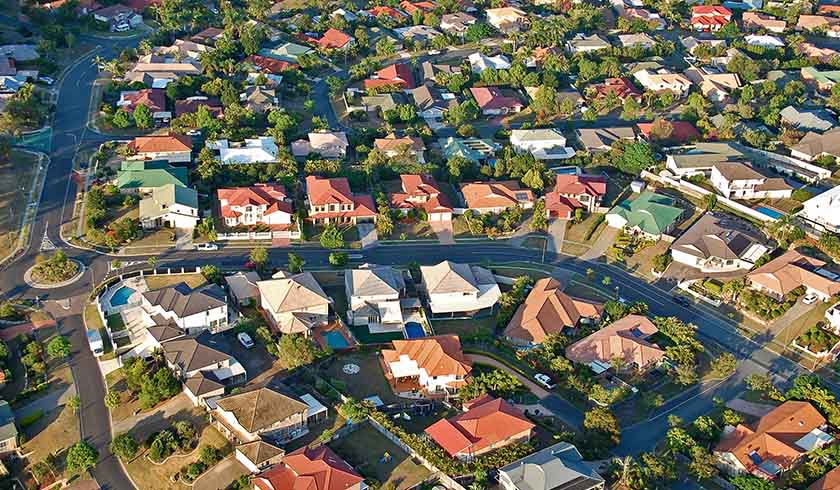Queensland’s rental crisis: Areas with tightest vacancy rates revealed
Almost 80 per cent of Queensland’s rental market is experiencing extremely low vacancy rates, while demand continues to soar, a new report has revealed.

As much as 78.9 per cent of Queensland’s rental market has remained static or experienced an extreme tightening of available rentals over the first quarter of 2021, signalling a real rental crisis, figures from the Real Estate Institute of Queensland (REIQ) have revealed.
Looking across the state, 70.2 per cent of the market now has a vacancy rate of below 1.0 per cent, with Brisbane’s inner-city recording the biggest quarterly drop at 0.5 per cent.
According to REIQ CEO Antonia Mercorella, several factors have led to a vacancy rate constriction across the state, including record-low interest rates, government support and stimulus measures, and the pandemic-driven “stampede” Queenlanders have witnessed migrating beyond their southern borders.
“[These] have sent Brisbane’s private rental market into uncharted territory, pushing vacancy rates down to their lowest levels since October 2012,” she continued.
Vacancies in metropolitan Brisbane – from the CBD to the outer ring – have experienced tightening quarter-on-quarter for four consecutive reporting periods, according to the CEO.
Over the past 12 months, rental vacancies across the Brisbane LGA have fallen 1.1 per cent, while Greater Brisbane’s vacancies have tightened by 0.9 per cent.
In contrast, rental demand has made a big comeback in the metropolitan markets, with the Brisbane CBD rising by 4 per cent over the same period, the inner city (0 to 5km from the CBD) by 1.3 per cent, the mid-city (5 to 20km from the CBD) by 1.0 per cent and the outer city by 0.8 per cent.
Some of the tightest rental markets across the capital include Anstead (0.5 per cent), Birkdale (0.3 per cent), Capalaba (0.2 per cent), Ferny Hill (0.3 per cent), Gumdale (0.4 per cent), Manly West (0.5 per cent), Rothwell (0.2 per cent), Sandgate (0.5 per cent), Shailer Park (0.4 per cent), Thornside (0.3 per cent) and Wakerley (0.4 per cent).
However, the most pronounced gaps between demand and vacancies were witnessed across regional Queensland, Ms Mercorella said.
The tightest regional vacancies are currently in Fraser Coast’s Maryborough (0.2 per cent), followed by the Southern Downs (0.3 per cent); Gympie, Rockhampton and Sunshine Coast (0.4 per cent); and Bundaberg regions (0.5 per cent).
The Gold Coast has also experienced a 0.3 per cent decline in vacancies, bringing the total vacancies to a record low of 0.6 per cent – the lowest in the last 15 years.
Looking ahead
With low rental vacancy rates across most of Queensland, Ms Mercorella urged the government to take the necessary steps to resolve the current rental crisis.
“The rental sector plays a critical role in Queensland’s housing system, and the role and size of our investor market has never been so important.
“The state government said that they want to help households transition from community housing to housing in the private rental market. Given that, more needs to be done to better support both increased and ongoing property investor activity in the Queensland property market and the contributions they make to the state economy,” the CEO commented.
The REIQ also expressed support for the amendment of the First Home Owner Grant to reinstate the grant for existing homes in order to address potential housing affordability issues, particularly in regional Queensland.
“Moving from renting to owning a house is one of the greatest leaps Australians will make in their lives. With current historic low interest rates meaning lower repayments, we’re starting to see cases where mortgage repayments are in fact lower than rent levels,” Ms Mercorella said.
“So, by allowing first home buyers to access property beyond new construction and extend their support to purchase existing housing, it will expose them to more affordable price points and help more Queenslanders transition from renting to home ownership.
“This in turn will help reduce pressure on the rental market while stimulating economic activity through the introduction of increased numbers to the broader property market. And this will ultimately lead to increased real estate transactions, which mean increased taxation for the state,” the CEO concluded.
